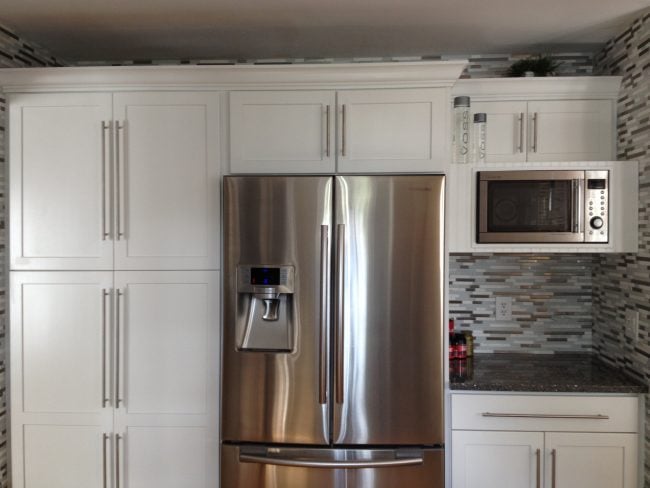
Most homeowners’ first reaction to a leaking refrigerator is to call in the services of an appliance repairman. If you don’t count yourself among the legions of do-it-yourselfers out there, this is still a good idea. Your fridge isn’t going to fix itself, and any leak is a sure-fire sign of something gone wrong. If you’re game for a little fridge repair 101, however, here’s a few tricks of the trade to try before you call in the experts.
Make Sure Your Fridge is Properly Sealed
One of the most common causes of a “leaking” fridge isn’t a leak at all. It’s the direct result of your fridge not sealing properly, and as a result running overtime to keep things cool. A fridge that runs excessively will build up extra condensation on the coils, which in turn can lead to the pool of water on the floor that’s causing alarm. Check the rubber door seals on your fridge and freezer to make sure you’re getting a proper seal. If you find a problem, wash the seals with warm water and soap and apply a thin film of lubricant (petroleum jelly works best). If this doesn’t solve your problem, you may need to replace the gaskets. Also, check the adjustable legs on your fridge and make sure the fridge tilts a little to the rear. If it’s leaning even a little bit forward, a proper door seal can be compromised.
Check the Drain Pan
Your leaking refrigerator may just have a cracked or damaged drain pan. Your fridge regularly drains water into this pan to prevent water pooling in the fridge itself. Evaporation takes care of the rest. Look underneath your fridge where the drain pan sits and pull it out for inspection. If it has a crack or is otherwise damaged, contact the appropriate retailer about getting a replacement as soon as possible.
Check the Defrost Drain
If your leaking refrigerator is draining inside as opposed to onto your floor, you’re probably dealing with a clogged defrost drain. Your fridge is constantly producing condensation inside the freezer, and that condensation drips down the defrost drain into a drain pan underneath the unit. This defrost drain can become clogged with debris or, more often, it freezes shut. Look in your refrigerator manual to locate your defrost drain, and take the appropriate steps to unclog it (inundating your drain with warm water will often do the trick).
Check Your Ice Maker for Leaks
If none of these other quick fixes solve your problem, check your icemaker for leaks. It’s a bit unusual, but sometimes the water line to the icemaker fails or comes loose, letting water into your freezer. Try tightening all connections, and if necessary, replacing the line that feeds the icemaker.
When In Doubt . . .
If after performing these basic inspections you can’t find the source of your leak, or if you think you’re getting in over your head, be sure to contact an appliance repairman immediately to get a quote or come fix the problem. A leaking refrigerator is usually an indication of a bigger problem, and it needs to be dealt with. Finally, if you suspect your fridge is leaking refrigerant rather than water, call an appliance repairman immediately. Refrigerant is a toxic material and you need to address this issue as quickly as possible in order to avoid subsequent health risks to you and your family.
 Undercounter Refrigerators
Undercounter Refrigerators 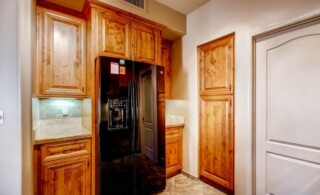 Types of Refrigerators
Types of Refrigerators 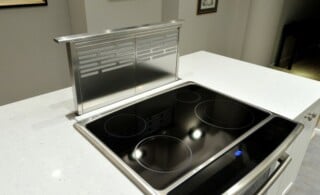 Finding the Right Electric Range for Your Kitchen
Finding the Right Electric Range for Your Kitchen 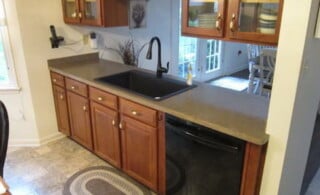 In Sink Dishwasher
In Sink Dishwasher 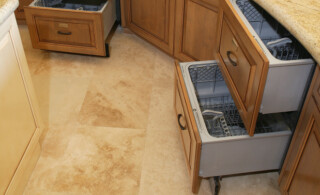 Compact and Counter Top Dishwashers: Save Space with Style
Compact and Counter Top Dishwashers: Save Space with Style 

I found the best way to unclog the plastic drain hose is to get a 6′ length of 1/8″ stainless steel aircraft cable (from Lowe’s, cut off the spool) and fish it down the length of the tubing from the top freezer to the drip pan. Fray the ends of the trailing side of the cable so that when you pull it through it works like a roto-rooter.